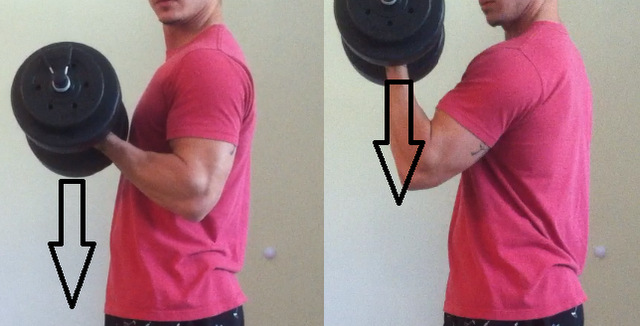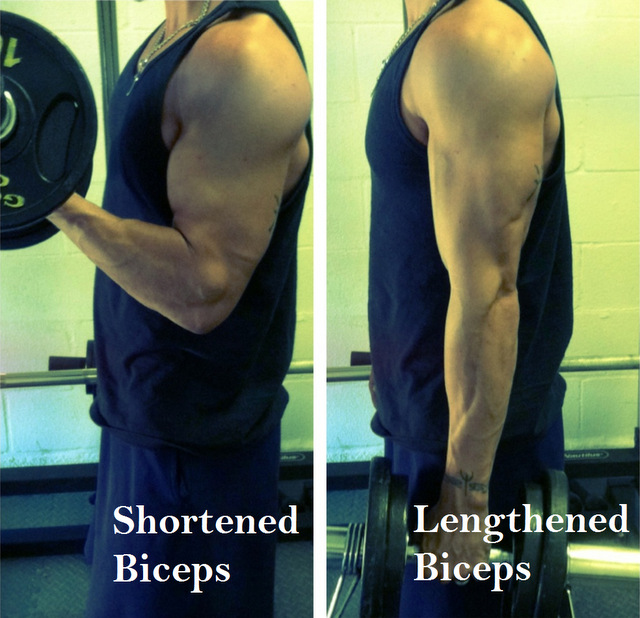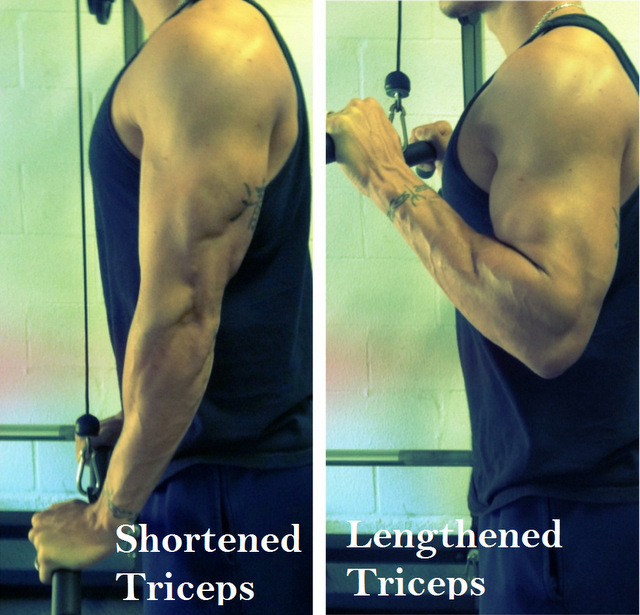For me, it’s my calves. Those little buggers wouldn’t grow until I did something drastic – trained them daily. For some, it’s their deltoids – in which case I’ll have an article coming for you soon. For those who want to build bigger arms, but have no clue how to get them growing, I give you Alain. He’ll get your arms looking more like his, and less like your lady’s immediately.
If you’re anything like I was then you’ve probably managed to put on a decent amount of muscle all around, only your arms are a little behind for no reason apparent to you. And although this could be the cause of improper program design, neglecting the biceps and/or triceps, or just plain genetics, have no fear because I am here to share 5 techniques that’ll have your arms huggin’ the sleeves tighter than a sumo wrestler in a punch buggy.
Before we get started, I must warn you that what you’re about to read goes against many of the traditional bodybuilding methods and are certainly not for the faint of heart.
Proper Prioritization
If you want to build bigger arms (or a bigger bench press, higher vertical or bigger chest) then you must focus on that one goal if you want optimal results. Don’t let your ego get in the way and allow you to believe that you can focus on bigger pecs, a higher vertical, and building bigger arms all at the same time. Ideally, you would want all of your resources (training, nutrition, and recovery) to help toward the ultimate goal of larger arms.
Maximizing Tension
Building muscle is not about how much weight you can lift. In fact, your muscles have no idea whether you’re curling 100lb dumbbell or a 20lb dumbbell. The only thing that the muscle understands and responds to is tension. This is why it is absolutely crucial that we maximize the amount of tension by making one small adjustment to your biceps training.
Look below and notice the picture on the left. In this picture, the arrow represents the direction in which gravity will push the dumbbell. The arrow in the picture on the right does the same. On the left, the elbow is glued to the side of the body thus allowing gravity to push down against the strength of the biceps. On the right, the elbow is lifted in the same fashion that most gym goers perform their biceps training. When the elbow comes away from the body, the gravity still pushes the dumbbell in the same direction. However, in this case the gravity is pushing directly through the elbow and ultimately placing more tension on the anterior deltoid and less tension on the target muscle.

Post Activation Potentiation
The biceps and triceps are small muscle groups (relatively speaking of course) and because they are so small, they become easier to fatigue.
When a muscle is fatigued, it is exhausted and unable to perform at its peak. Although fatigue is standard in most training programs, we want to avoid it as much as possible in order to maximize our performance in the gym. The best way to avoid fatigue is to spark the CNS (central nervous system) with a little technique called Post Activation Potentiation (or P.A.P).
Potentiation: Being ready and excited and primed. Your nervous system is active and able to fire all of your muscles. This is where you can achieve your highest performance.
P.A.P is the reason that anyone who trains using Wave Loading can typically lift heavier weight the further they get into the workout.
P.A.P for Arms Training: If you want to prime the CNS in order to activate and fire all of the muscles in your biceps while avoiding fatigue, you can do so by starting your biceps training with 5 sets of heavy weighted chin ups. Keep the reps at 5 per set and DO NOT go to failure.
Priming your CNS for triceps training can be done by beginning your triceps training with 5 sets of heavy weighted dips in the 4-6 rep range or simply by starting off the workout with a few sets of heavy close grip bench press.
Full R.O.M –Lengthening and Shortening
There are many different ranges that you can train each muscle group, and you should do so. However, the most important range is a full range. Problem is, full ROM is just too vague and not well understood in the bodybuilding community.
The true full range of motion takes place when the target muscle is completely shortened (on the concentric movement) and completely lengthened (on the eccentric movement). Fully shortening and lengthening a muscle will allow you to train it (the target muscle) at its absolute weakest point. Now I am going to explain how to get a REAL full ROM with your arm training in order to optimally create new stimulus for rapid muscle growth.
Biceps

Training the biceps is a true full range of motion is done is by fully contracting (flexing) your biceps at the peak of the concentric movement and then flexing its antagonistic muscle (triceps) at the end of the eccentric movement. This will allow you to train the biceps at their weakest and increase the time they spend under tension.
Note: Leave your ego at the door. This technique is very difficult so you’ll have to start off using a much lighter weight in order to ensure proper form.
Triceps

The trick to training the triceps is very similar (if not practically identical) to training the biceps. Use the same idea of fully lengthening and fully shortening the muscle. The triceps are fully shortened when they are flexed at the peak of the concentric movement and fully lengthened when the forearm touches the biceps at the end of the eccentric movement.
Pump up the…frequency!
If you have ever read anything on arms training that you have probably been subject to the old school methodology that one should not train arms too frequently because since they are a smaller muscle group, they are easily overtrained. In fact, if you’ve read any of my older stuff, you’ve probably even heard me say this as well. But, I stand corrected!
Science has (more) recently proved the exact opposite about frequent arms training. This method was named the Repeated Bout Effect and proves that training a muscle group more often will cause your body to adapt faster. A lot of “experts” would argue that adaptation is a bad thing…but I say their wrong. Building muscle is 100% about adaptation. We train a muscle, it adapts to the training by building new, stronger muscle, period.
Now, before you create a 5 x per week arms training split, let’s use common sense. The muscle will still need adequate rest so that it can recover, repair, and grow…however, you don’t have to wait till next week to isolate your arms again. If you want bigger arms (and this is your main goal) then train them 3 times per week with at least 24-48 hours rest in between each session.
Final Words
If you are having a hard time packing on muscle to your arms, check out 21 Day Arm Explosion. This is the same program that I used to almost 2 inches to my arms using secret techniques that the bodybuilding magazines and supplement companies don’t want you to know about.
Alain Gonzalez is a Certified Personal Trainer, Fitness Author, and Founder of www.MuscleMonsters.com
From Chad,
If arms are your weak point, check out his program ‘Arm Explosion‘. Trying to do things on our own and without the guidance of someone who knows better – or someone who’s simply found a much better solution (like Alain) – is a great way to get stuck with the same problem – or weak-point – for the remainder of our lifting career.
Don’t be stubborn like I was with my calves. If the solution is in front of you, get it. Fix the problem. And then move on to bigger and better things.
